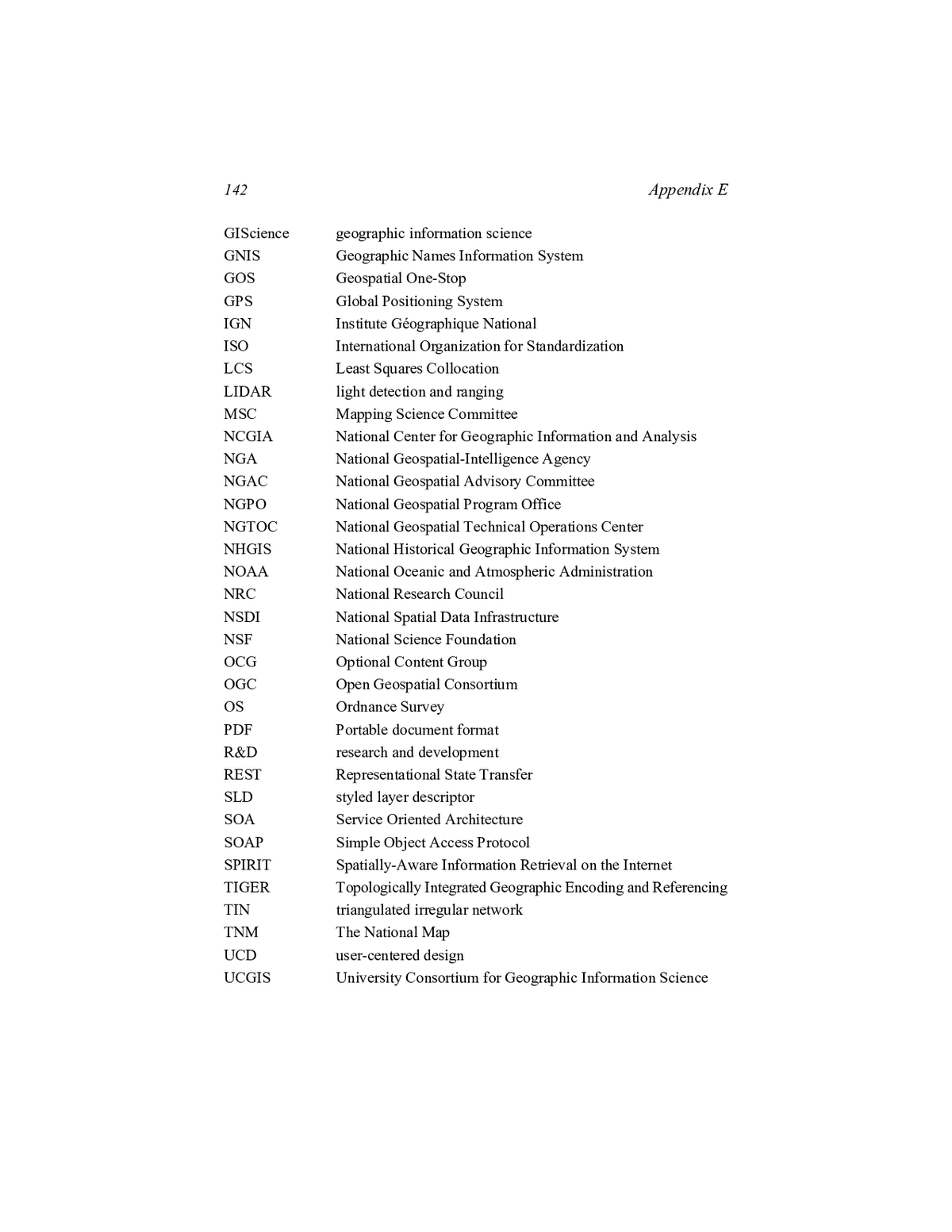Below is the uncorrected machine-read text of this chapter, intended to provide our own search engines and external engines with highly rich, chapter-representative searchable text of each book. Because it is UNCORRECTED material, please consider the following text as a useful but insufficient proxy for the authoritative book pages.
E Acronyms and Abbreviations AJAX Asynchronous JavaScript and XML API application programming interface BARO Basic and Applied Research Office CEGIS Center of Excellence for Geospatial Information Science COGIT Conception Objet et Généralisation de lâInformation Topographique CRADA Cooperative Research and Development Act CSW Catalog Service for Web DARPA Defense Advanced Research Projects Agency DCM Digital Cartographic Model DHS Department of Homeland Security DLM Digital Landscape Model DOE Department of Energy DOI Department of the Interior EPA U.S. Environmental Protection Agency EROS Center for Earth Resources Observation and Science ESRI Environmental Systems Research Institute FEMA Federal Emergency Management Agency FGDC Federal Geographic Data Committee FTE full-time equivalent GEOLEM Geospatial Object Library for Environmental Modeling GIS geographic information system 141
142 Appendix E GIScience geographic information science GNIS Geographic Names Information System GOS Geospatial One-Stop GPS Global Positioning System IGN Institute Géographique National ISO International Organization for Standardization LCS Least Squares Collocation LIDAR light detection and ranging MSC Mapping Science Committee NCGIA National Center for Geographic Information and Analysis NGA National Geospatial-Intelligence Agency NGAC National Geospatial Advisory Committee NGPO National Geospatial Program Office NGTOC National Geospatial Technical Operations Center NHGIS National Historical Geographic Information System NOAA National Oceanic and Atmospheric Administration NRC National Research Council NSDI National Spatial Data Infrastructure NSF National Science Foundation OCG Optional Content Group OGC Open Geospatial Consortium OS Ordnance Survey PDF Portable document format R&D research and development REST Representational State Transfer SLD styled layer descriptor SOA Service Oriented Architecture SOAP Simple Object Access Protocol SPIRIT Spatially-Aware Information Retrieval on the Internet TIGER Topologically Integrated Geographic Encoding and Referencing TIN triangulated irregular network TNM The National Map UCD user-centered design UCGIS University Consortium for Geographic Information Science
Appendix E 143 UID User Interface Design USDA U.S. Department of Agriculture USGS U.S. Geological Survey WCS Web Coverage Services WFS Web Feature Services WMS Web Map Services




